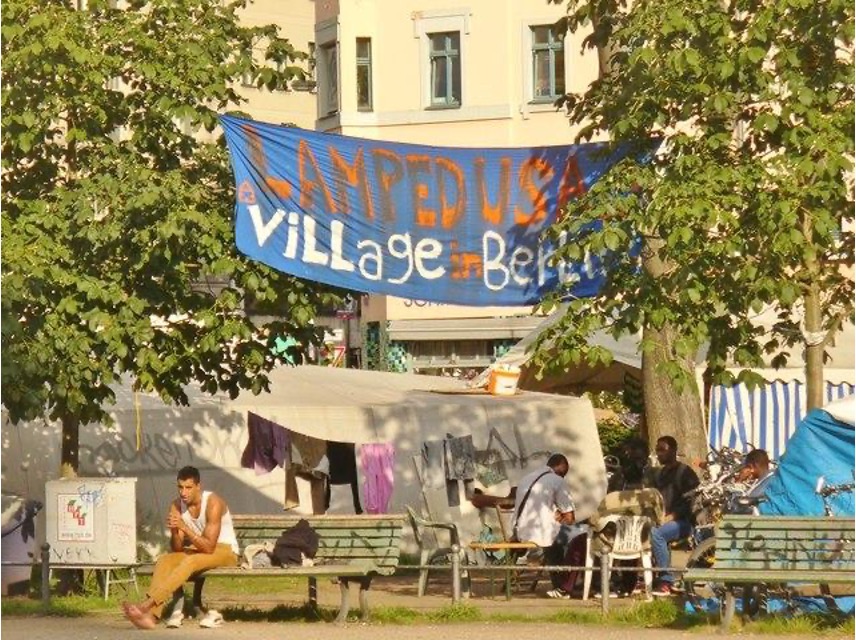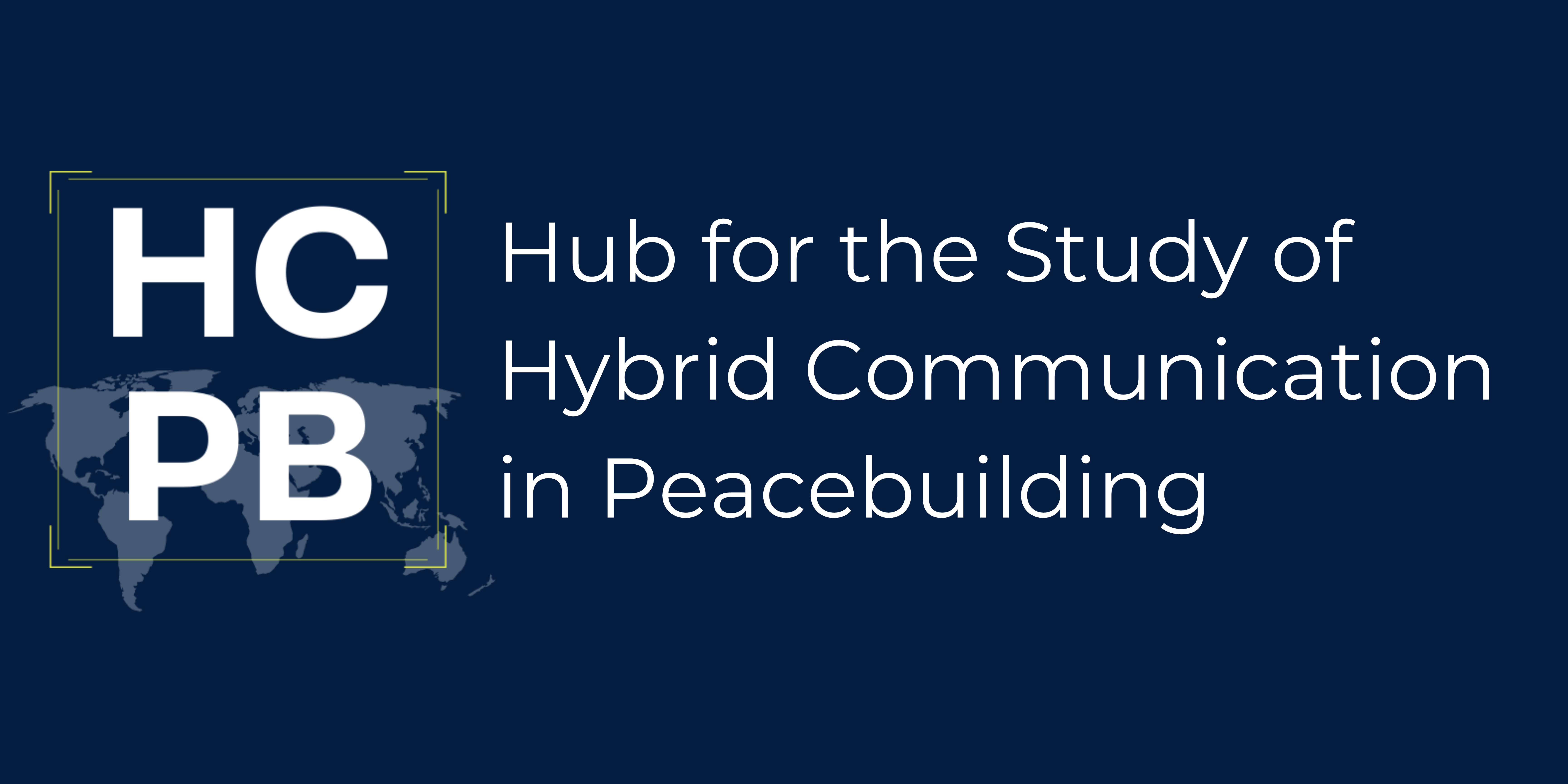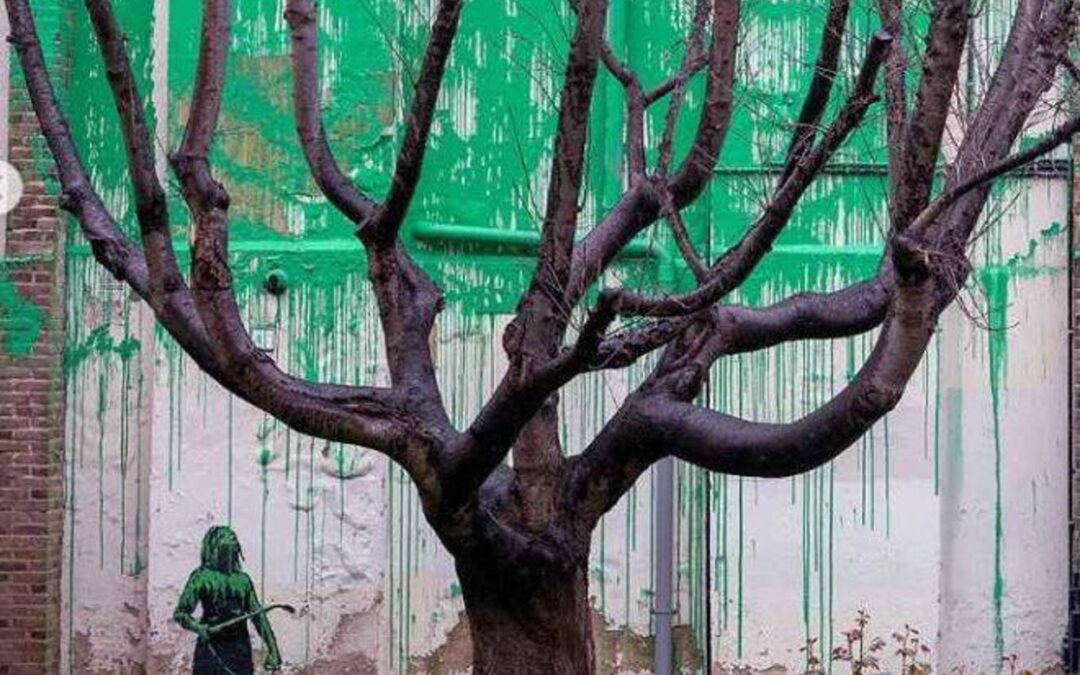By Heike Härting
Above Image: Graffiti artist Banksy’s “Tree Mural” (North London, 2024). The mural attends to the various impacts of environmental and human violence and the need to interpret and rescript them.
What is the relationship between literature, conflict and peace studies? How do conflict and post-conflict narratives mediate the multiple planetary and epistemological entanglements of peacebuilding processes? How do literary texts imagine peace in ways more pragmatic politics of peacebuilding cannot? Surely, since time immemorial—from The Iliad to Henry V, from War and Peace to Slaughterhouse 5, from All Quiet on the Western Front to The Three Day Road, from The Kite Runner to Half of a Yellow Sun— literary epic narratives of war and collective violence have told the simultaneously glorifying and horrifying stories of bloody battles, the destruction of entire peoples and environments, all in the name of internal and external colonial expansion and pacification, national sovereignty and border security, greed, and power. Within the Western tradition, peace narratives comprise counter-discursive projects that seek to expose the structural and subjective workings of war and violence. Since Aristophanes’ play Peace, peace narratives, to put it in very simplistic terms, emphasize and, at times, prescribe conflict resolution and pacificism as a collective telos, while nostalgically longing for a pre-war state of imagined social bliss.
But here is the crux of representing war and peacebuilding processes in film and literature: Not only is peacebuilding often misread as a euphemism for morally legitimated “just war” (St. Augustine) or martial peacemaking missions, but representations of war and, inadvertently, of peace easily descend into Hollywood-style propaganda and rescue narratives that deploy and capitalize on “the pain of others” (Susan Sontag). Though vastly different, Cary Fukunaga’s literary film adaptation of the child soldier narrative Beasts of No Nation (2015), Steven Spielberg’s military narrative of heroic sacrifice, Saving Private Ryan (1998), Antoine Fuqua’s humanitarian war romance Tears of the Sun (2003), and such controversial war movies as Stanley Kubrick’s Path of Glory (1957) and Francis Ford Coppola’s Apocalypse Now (1979) come to mind. What representations of war and peace must inevitably and creatively negotiate is a complex dialectic of violence. For, on the one hand, war and peace are waged on the “ground” and in cinematic “electronic mental space” (Baudrillard 48) and, on the other hand, this dialectic holds, as Walter Benjamin famously observed, that every “document of civilization” is at the same time “a document of barbarism” (256).

Above Image: Still from Apocalypse Now (1979). This iconic shot of the use of Napalm bombs during the Vietnam War illustrates Benjamin’s dialectic of violence and its aestheticization.
Writing in 1935, in the dark shadow of Nazi Germany’s newly decreed “race laws” and Leni Riefenstahl’s Nazi propaganda film The Triumph of the Will (1935), Benjamin knew all too well about the ideological perils inherent in fictionalizing and representing war through aesthetic means. In fact, the “aestheticization of politics,” he warned, ushers in the rise of fascism, the futurist apotheosis of technology and progress, and the normalization of war as a militarized cultural and political habit of mind. The proper antidote, Benjamin insisted, is to politicize art. With hindsight, Benjamin’s exhortation refers perhaps neither to the instrumentalism of Soviet socialist realism nor to the aesthetic autonomy and anti-instrumentalism of the arts championed as an articulation of Western freedom by the CIA’s covert art programs throughout the Cold War (Caroline Levine). Rather, Benjamin implies that art cannot but be political, and that peace requires a profound transformation of received modes of thinking. Benjamin and Levine also taught me that critique, though necessary, may not be enough. It is necessary to mobilize the creative imagination and its far-reaching capacity “to speak truth to power” (Edward Said) and to shape, communicate, and bring about alternative worlds, new collectivities, and social and political ways of living in common that are not restorative but reparative. Thus, training the creative imagination to affect “a change in mindset” (2017 UN Guidance Note on Sustaining Peace) fosters peacebuilding as a communicative, cultural, and political practice.
I use the term “post-conflict” narratives to gesture towards the persistence of conflict, its ongoing and multifarious effects on different actors/subjectivities and multiple entanglements in different sites of violence, and the messy and often surprising forages and failures involved in mediating peacebuilding strategies. Post-conflict narratives are not synonymous with “peace literature” (Anthony Adolf), which, while reading literature, as one must, in its various social, historical, economic and political contexts, favors a reader-response approach and cultivates Western democratic civic and moral virtues such as tolerance and “unity in diversity” (Adolf 9). Post-conflict narratives, including many contemporary child soldier narratives, are often translational, speculative, visceral, and planetary, less certain about national and liberal parameters of conflict resolution and their controversial politics of recognition. Instead, post-conflict narratives address the liminal constitution of victims and aggressors, of life and death (Turner 1995), and they remain vigilant about the ways in which particular social and cultural, racialized and gendered grammars of violence persist and reinvent themselves in times of peace. In my analysis of contemporary child soldier narratives and Jenny Erpenbeck’s post-conflict refugee novel Go, Went, Gone, included in Pukallus and Connaughton’s Routledge Handbook of Conflict and Peace Communication, I also turn the critical gaze to the reader. However, I argue that reading post-conflict narratives attentively and responsibly constitutes a reparative and decolonial practice that guarantees no immediate access to unequivocal meanings, truths, or resolutions. Rather, reparative readings, a concept I adapt from Eve Kosofsky Sedgwick and queer theory, draw from the wisdom of embodied knowledge. They configure peacebuilding as an open, polyphonous, and humbling process of multiple “entanglements” that seeks to balance all forms of organic and inorganic terrestrial life (Torrent 2021). They posit readers as agents and co-producers of stories and invite them to unlearn and recompose unreflected claims to power and exclusionary mindsets in speculative and inclusive—yet not homogenizing—ways. As such, post-conflict reparative narratives remain receptive to painful surprises and open to a “future. . . different from the present” and to a “past [that]. . .could have happened differently from the way it actually did” (Sedgewick 146). I will end with an example from Erpenbeck’s novel.

Above Image: Oranienplatz occupation and movement against the Dublin regulation (2012-2014)
Set in Berlin at the end of the refugee hunger strike and the occupation of Oranienplatz in 2014, Erpenbeck’s novel tells the story of Richard, a former East German widowed professor emeritus of Classical Philology, and his encounter with various refugees from different war-torn African countries who, subject to the Dublin Regulation for refugees, are deprived of their right to mobility and to tell their “stories” (Erpenbeck 82). The novel neither fetishizes nor speaks for the refugees, but its “criss-crossing storylines” (Erpenbeck 40) track Richard’s transformation into a reparative reader whose personal history equally traverses several wars, losses, and political upheavals. Contemplating his conversations with Awad, a Ghanaian refugee, he realizes that only sheer luck prevented him from becoming an orphaned refugee after World War II and he wonders: “Must living in peace—so fervently wished for throughout human history and yet enjoyed in only a few parts of the world—inevitably result in refusing to share it with those seeking refuge, defending it instead so aggressively that it almost looks like war?” (286). Peacebuilding, then, reaches far beyond the immediate resolution of a conflict. Indeed, it is in the novel’s formal composition, its narrative repetitions, connections, and contiguities, its “additive and accretive” (Sedgwick) syntactic compositions that the novel’s relational peacebuilding project unfolds. Furthermore, its sparse symbolic language reflects, in Richard’s words, the act of voluntarily “learning to stop wanting” or desiring “things” (167), a process which Spivak describes as “the uncoercive rearrangement of desire” to right human wrongs (173). For otherwise, Richard knows, “your desires will be like a bellyful of stones dragging you down” (Erpenbeck 167). The connotation of overeating and overconsumption relates peacebuilding to a commonly shared responsibility to maintain the planet’s habitability and requires new habits of consumption and degrowth. Peacebuilding thus entails a political, collective, and individual process of unlearning one’s privileges and learning how to desire less. In the last pages of the novel, Richard has taken the riskier but also reparative path of practicing unconditional hospitality. He has turned his house into a commonly shared space of refuge for refugees and friends. Having moved from a paranoid to an actively reparative mindset, Richard has changed his former convictions about property, belonging, and home, and opened himself to affects, including pain, uncertainty, and disappointment, while allowing for entangled and precarious ontologies to co-evolve. In Erpenbeck’s novel’s overlapping post-conflict narratives, the co-constitution and agency—rather than the spectacle—of the “despair of others” create the condition of possibility for peacebuilding that begins from a place of planetary concern and “by way of another ‘subject’” (Bhabha 2018, 11).
N.B.
This blog post accompanies Heike’s chapter in Connaughton, S. and Pukallus, S. (eds.) (forthcoming Oct 2024). The Routledge Handbook on Conflict and Peace Communication. New York: Routledge.
Works Cited
Adolf, Anthony. 2010. “What Does Peace Literature Do? An Introduction to the Genre and its Criticism.” The Canadian Journal of Peace and Conflict Studies, vol. 42, no. 1-2, 2010, 9-21. https://www.jstor.org/stable/23607874
Baudrillard, Jean. 1989. America. Translated by Chris Turner. London: Verso.
Benjamin, Walter. 1968. Illuminations. Introduced by Hannah Arendt. Translated by Harry Zohn. New York: Schocken Books.
Bhabha, Homi. 2018. “Migration, Rights, and Survival: The Importance of the Humanities Today.” From the European South 3: 7-12. https://www.fesjournal.eu/wp-content/uploads/2018/09/1.Bhabha.pdf
Erpenbeck, Jenny. 2017. Go, Went, Gone. Translated by Susan Bernofsky. New York: New Directions Books.
Härting, Heike. “Peacebuilding in Conflict and Post-Conflict Narratives.” The Routledge Handbook of Conflict and Peace Communication. Edited by Stefanie Pukallus and Stacey Connaughton. Routledge, forthcoming October 2024.
Levine, Caroline. 2023. The Activist Humanist. Form and Method in the Climate Crisis. Princeton: Princeton University Press.
Said, Edward.1994. Culture and Imperialism. New York: Vintage Books.
Sedgwick, Eve Kosofsky. 2003. Touching Feeling. Durham: Duke University Press.
Sontag, Susan. 2003. Regarding the Pain of Others. New York: Picador.
Spivak, Gayatri Chakravorty. 2003. “Righting Wrongs.” In Human Rights, Human Wrongs. The Oxford Amnesty Lectures 2001, edited by Nicholas Owen. Oxford: Oxfore University Press168-227.
Torrent, Ignasi. 2021. Entangled Peace. UN Peacebuilding and the Limits of a Relational World. Lanham: Rowman & Littlefield.
Turner, Victor. 1995. “Betwixt and Between. The Liminal Period in Rites de Passage.” The Forest of Symbols. Ithaka: Cornell University Press. 93-111.
UN Guidance Note on Sustaining Peace.2017. https://www.un.org/peacebuilding/sites/www.un.org.peacebuilding/files/documents/guidance_on_sustainingpeace.170117.final_.pdf

